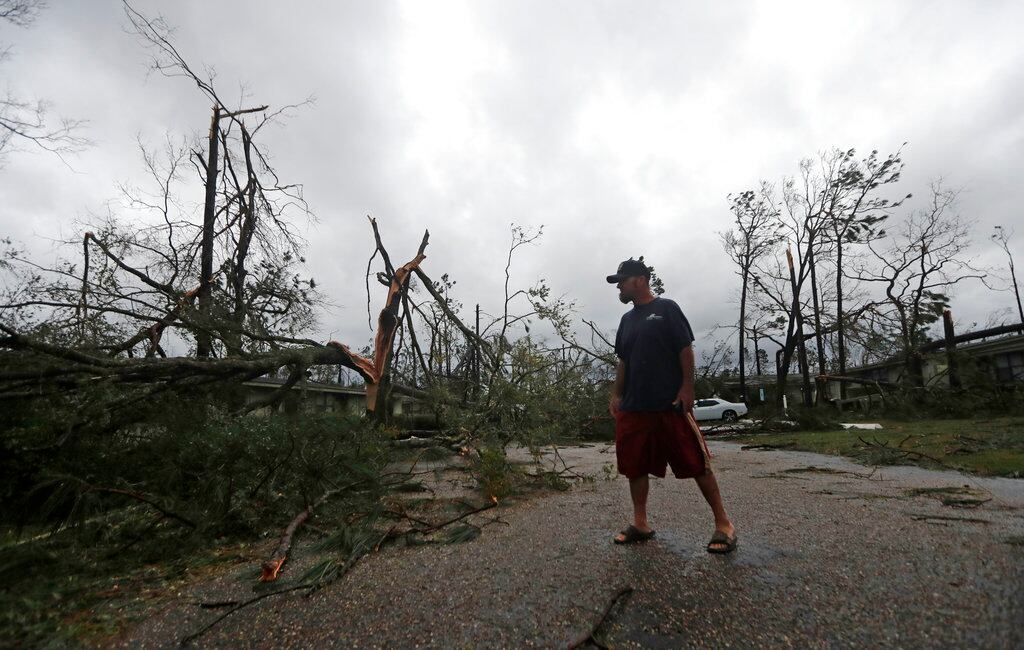The Air Force said Friday that an unspecified number of aircraft left inside hangars at Tyndall Air Force Base in Florida were likely damaged when Hurricane Michael devastated the base, with imagery on social media showing an unknown number of F-22 Raptors are among those impacted.
Air Force spokeswoman Ann Stefanek said in an email that some aircraft were left in Tyndall’s hangars due to maintenance or safety reasons, and all of those hangars were damaged when the Category 4 storm pounded the Gulf Coast Wednesday.
“We anticipate the aircraft parked inside may be damaged as well, but we won’t know the extent until our crews can safely enter those hangars and make an assessment,” Stefanek said. The Air Force was unable to say how many aircraft, and which air frames, were left behind.
However, according to the Facebook Air Force Forum page, four F-22 Raptors from the 43rd Fighter Squadron were unable to fly out of the way of the storm and may have been damaged. Three Raptors were in one hangar that had significant damage, according to the forum, and a fourth rode out the storm in a separate hangar that seemed to sustain less damage, based on imagery on the forum. The Air Force would not confirm that the F-22s were damaged in the storm.
RELATED

Photos shared with Defense News on social media also showed a heavily damaged QF-16 aerial target aircraft, with its front nose-cone sheared off, as well as a hangar with an F-22 inside and its roof largely missing. A separate source told Defense News that as many as ten F-22s may have been damaged by the storm.
The same source said the damage to the F-22s should be largely repairable, but repairs will be costly — and come at a time that Secretary of Defense Jim Mattis has made increasing F-22 readiness rates a priority.
Aerial video of the damage done to Tyndall and photographs on social media, first highlighted by The Drive’s defense blog The War Zone, also show that damaged aircraft may include the F-22, QF-16 and MU-2 turboprop trainer aircraft.
The Air Force also said special tactics airmen from the 23rd Special Tactics Squadron reopened air traffic at Tyndall on Thursday. Those airmen are able to assess, open and control everything from a clandestine dirt strip to a major airfield in all environments, including those hit by natural disasters. The 23rd is based at Hurlburt Field, which is near Valparaiso, Florida, but avoided the worst of the storm.
Tyndall’s runway was cleared at 7 p.m. Thursday, and the first plane landed six minutes later, the Air Force said. The special tactics airmen will continue to support airfield operations at Tyndall until further notice, which will ease the way for humanitarian support to come through Tyndall.
Military Times Pentagon bureau chief Tara Copp and Defense News Deputy Editor Aaron Mehta contributed to this report.
Stephen Losey is the air warfare reporter for Defense News. He previously covered leadership and personnel issues at Air Force Times, and the Pentagon, special operations and air warfare at Military.com. He has traveled to the Middle East to cover U.S. Air Force operations.





